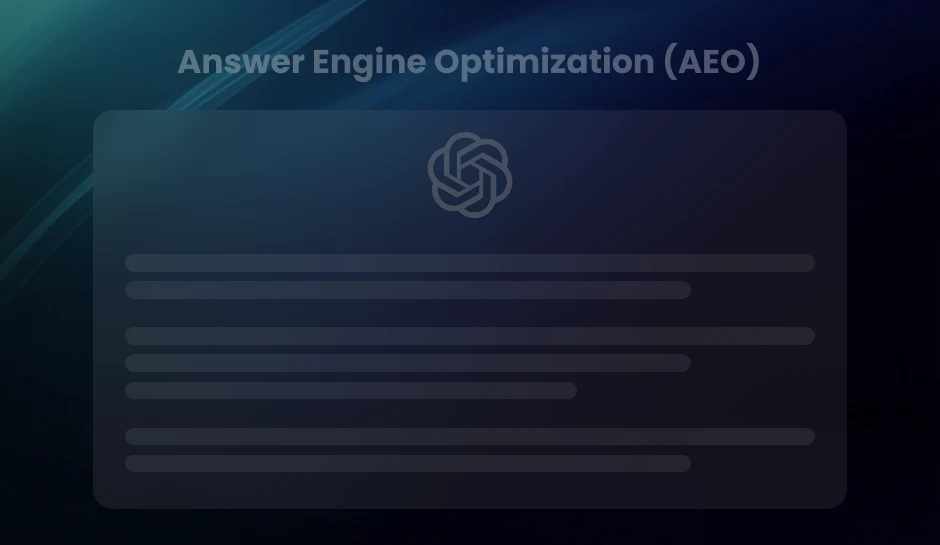
Understanding Content Attribution: Principles and Practices
Mastering content attribution protects creators, fosters innovation, and builds trust in the digital economy. By implementing robust attribution strategies, businesses enhance credibility, fuel engagement, and drive conversions. From blockchain integration to precise analytics, explore how attribution not only safeguards intellectual property but also boosts marketing outcomes and monetization opportunities.
Content attribution refers to the formal recognition given to the creators of original works when others use their material. From meticulous credit listings in academic research to image sourcing in blog posts, attribution practices safeguard the connection between content and its creators. Differentiating among forms can range from citing the source of an insightful idea to acknowledging the creator of a stunning photograph.
Delving into the interplay between content attribution and intellectual property reveals a landscape where legal rights intersect with ethical practices. Intellectual property laws confer certain exclusive rights to creators over their original works. Implementing rigorous content attribution standards reinforces these rights, ensuring creators receive due recognition and content users comply with legal and ethical standards. This respect for ownership encourages innovation and supports the integrity of intellectual pursuits.
Attribution and Digital Rights Management (DRM)
Digital Rights Management (DRM) serves as a technological enforcement mechanism for content attribution. When creators publish digital content, they utilize DRM systems to control how that content is copied, distributed, or modified.
DRM technology restricts unauthorized use, ensuring that the rights holders receive credit and compensation for their work. By implementing access controls and usage tracking, DRM contributes to maintaining the integrity of content ownership.
Yet, DRM is not without challenges and criticisms. Consumers may encounter frustration when DRM measures are overly restrictive, potentially impeding their ability to enjoy content for which they have paid.
Critics argue that overbearing protections may stifle creativity and the fair sharing of knowledge. The effectiveness of DRM is further challenged by sophisticated methods that bypass these protection mechanisms, raising questions about the balance between protection and accessibility.
- DRM tools strive to deter piracy and ensure that creatives maintain economic benefits from their work.
- Users may confront limitations in how they can access and use digital content, prompting debates about DRM’s implications on user rights.
- The persistent evolution of digital piracy techniques necessitates continuous advancements in DRM technologies.
Despite its controversies, DRM remains a significant player in the digital landscape, providing a legal and technological framework crucial for safeguarding content attribution.
Pro Tip- Use DRM solutions that strike a balance between protecting content and ensuring a seamless user experience to maintain trust and accessibility while safeguarding your rights.
Navigating the Terrain of Copyright Law
Copyright law underpins the entire concept of content attribution, assigning exclusive legal rights to the creator of original work and stipulating the conditions under which this work can be used by others. Creators possess the right to reproduce, distribute, perform, display, or license their work, and they also have the authority to prohibit unauthorized uses.
These rights are automatically endowed upon the creation of an original work that is fixed in a tangible medium of expression. The duration of copyright varies globally, typically lasting the lifetime of the author plus an additional 50 to 70 years, though exact terms differ from country to country.
Within the international landscape, the Berne Convention for the Protection of Literary and Artistic Works serves as a foundational treaty, which over 170 countries have joined. The Convention embraces the principle of automatic protection and a minimum set of rights for authors. Additionally, the World Intellectual Property Organization (WIPO) facilitates the protection of copyright on an international scale.
Digital Rights Management (DRM) technologies aim to control the use of digital content through restrictive licensing agreements. These mechanisms seek to prevent unauthorized redistribution and maintain content integrity.
- The United States’ Digital Millennium Copyright Act (DMCA) offers safe harbors for online service providers conditional on compliance with certain requirements to combat infringement.
- The European Union’s Copyright Directive contains provisions to harmonize copyright rules across its member states, including the controversial Article 17, which mandates content-sharing platforms to ensure copyrighted works are not available on their services.
Collective rights organizations play a pivotal role in managing royalty collection and distribution for the use of copyrighted work. These entities grant licenses that allow for the broadcasting, public performance, and reproduction of creative works while ensuring attribution and financial compensation for creators.
Over time, legal systems continue to evolve, grappling with the complexities of intellectual property in an ever-connected, digital-first world. Copyright law remains a critical aspect of the culture industry, shaping how content is disseminated and utilized across various mediums and platforms.
Pro Tip- Stay informed about international copyright treaties like the Berne Convention and local laws like the DMCA or EU Copyright Directive to navigate content attribution and usage rights confidently, especially in cross-border contexts.
Digital Watermarking Techniques
Digital watermarking emerges as a critical technology for securing and attributing content in an increasingly digital world. Content creators embed invisible marks or codes within their work to track and manage copyright usage. As a strategy, this seamlessly integrates with content safeguarding measures across various media such as videos, images, and audio files.
In the media and content industries, digital watermarking encodes information into content without altering its perceptibility. These techniques allow broadcasters to trace illegally distributed content, enabling content owners to unmistakably assert their rights. Media companies employ this to monitor and control the distribution of their work, ensuring rightful recognition and compensation for their creative assets.
Digital watermarking is not limited to just one methodology. It adapts to various applications, enhancing protection through robust technologies, such as:
- Visible watermarking, where logos or text overlays become part of the visual content, marking it clearly as proprietary.
- Invisible watermarking, which imprints data within the content in a way that is imperceptible on the surface yet discoverable through specific software.
- Forensic watermarking, which imprints a unique identifier for each copy of the digital media, greatly aids in identifying the source of a leak or unauthorized copy.
- Real-time watermarking is used in live broadcasts to trace content redistribution quickly.
Moreover, advancing technologies like spread spectrum watermarking, where data is scattered across a wide frequency bandwidth, offer robustness against compression and cropping. Additionally, watermarking techniques can encode metadata directly into the content, offering seamless integration with content management systems and enhanced tracking capabilities.
Digital watermarking not only reassures creators about the integrity of their content but also offers a non-intrusive way to retain ownership rights. This harmonizes with the global shift towards digitized content, providing an invaluable tool for maintaining a fair, traceable content ecosystem.
Pro Tip- Combine invisible and forensic watermarking to ensure robust content protection, allowing both discreet tracking and pinpointing the source of unauthorized usage without disrupting the user experience..
Mastering the Art of Citations in Content Creation
Citation practices anchor the foundation of credible content creation. Mastery of this skill not only acknowledges original creators but also fortifies the trust of audiences and the integrity of the work. One initiates proper attribution by incorporating standard citation formats like APA, MLA, or Chicago style, tailored to the nature of the work and the preference of the publication or academic field.
Citations serve as a map for readers to trace the origin of ideas, facts, and quotations. Consistent use of a citation style across a work or series of works allows for a seamless reading experience, where the audience can engage with the content fully rather than be confused by erratic attribution practices.
- Correctly formatted citations act as professional acknowledgments of intellectual debt.
- Diligence in citation fosters a culture of respect amongst peers in the content creation community.
- By consistently citing sources, readers receive a reliable pathway to additional resources and related research.
While citation generators can streamline the task, a deep understanding of citation guidelines ensures that sources are attributed correctly even when nuanced situations arise. This knowledge enables content creators to navigate complex scenarios, such as citing multimedia sources or materials without clear authorship.
Whether a novice or seasoned professional, regular review and application of citation standards is a non-negotiable practice in responsible content creation. Advanced skills in referencing pave the way for informed discussions, intellectual progression, and the building of a knowledgeable community that values transparency and accountability in the sharing of information.
Pro Tip- Always cross-check automated citations from generators against official style guides to ensure accuracy, especially for complex sources like multimedia or anonymous works.
Monetizing Content While Respecting Attribution
Monetizing creative work hinges on the precise coordination between earning revenue and honoring the origins of content. A creator’s ability to draw income from their intellectual property relies on robust attribution mechanisms. Recognizing these mechanisms bridges the professional integrity gap and ensures revenue flow aligns with the creators’ rights.
Examining royalty distribution models reveals their significance for content creators. These models determine how profits from content are allocated among those with intellectual ownership. For example, streaming services deploy algorithms to share revenue based on play counts and user engagement, directly affecting creators’ earnings.
Furthermore, the influence of proper attribution on monetization extends to setting industry standards. Musicians receive royalties when their work is broadcasted, thanks to meticulous tracking and crediting systems. Such systems maintain a record of content usage and assure that creators are compensated accordingly, promoting a sustainable creative environment.
Royalty-sharing agreements operate on the principle of clear content attribution. The agreement specs mandate crediting all parties involved in the content creation process and their contributions dictate their share of the profits. These stipulations underscore the economic relevance of attribution.
- Attribution confirms the authenticity, driving audience trust and indirectly boosting revenue potential.
- Attributed content mitigates legal risk, preventing costly infringements.
- Transparent attribution fosters collaboration opportunities, leading to potentially lucrative partnerships.
Audiences often align their patronage with ethical practices. When creators transparently follow attribution, audience loyalty may increase, opening new revenue streams such as merchandise, live events, or educational offerings.
Attribution serves as a cornerstone of content monetization strategy. Its due diligence lays the groundwork for enduring financial gain while respecting the mosaic of creativity that constitutes the digital content domain.
Pro Tip- Integrate robust attribution tracking tools into your monetization strategy to ensure creators are credited accurately, fostering audience trust and maximizing revenue opportunities through ethical content practices.
Mastering Content Attribution on Digital Platforms
Digital content platforms encompass giants like YouTube and Spotify, each with its mechanisms for managing content attribution and rights. Users upload hours of content every minute, and these platforms must balance the right to share with the protection of creators’ intellectual property. Digital tools and algorithms are deployed to track and manage the uploaded materials.
YouTube’s Approach to Content Attribution
YouTube implements a sophisticated system known as Content ID. This technology compares uploaded videos against a database of filed works, automatically identifying potential copyright infringements. When matches are found, the content owner is alerted and can decide whether to monetize, block, or track the usage of the content. This ensures that authors and artists receive credit and compensation for their work.
Spotify and Streamlined Rights Management
Spotify operates on a model where rights holders receive royalties based on the number of streams their content amasses. The platform has agreements with record labels, which, in turn, are responsible for compensating the artists according to their contractual agreements.
This digital service provider maintains transparency and precision in its music attribution, often cited as a reference standard in the industry.
- YouTube’s Content ID allows for the automated management of music rights, ensuring that artists are compensated.
- Spotify relies on meticulous data tracking to accurately distribute royalties from streamed music.
These platforms are continually updating their content management systems to address the ever-evolving landscape of digital rights. As user engagement with digital content soars, the platforms’ behind-the-scenes efforts to protect and manage digital rights become even more crucial.
Every streamed song or viewed video passes through a complex filter of legal consideration, aimed at safeguarding the creator’s work while promoting broad access for consumers.
Pro Tip- Leverage platform-specific tools like YouTube’s Content ID and Spotify’s royalty tracking to ensure your content is properly attributed and monetized while staying informed about updates to these systems for optimal rights management..
Blockchain Technology: A Game-Changer for Content Attribution
Blockchain is reshaping the landscape of content attribution with its immutable and transparent nature. Beyond its role in cryptocurrencies, the technology’s potential to track and record content transactions offers creators unprecedented control over their work. As blockchain creates a decentralized and tamper-proof ledger, each piece of content benefits from an indelible digital footprint, allowing for real-time tracking and proof of ownership.
Applications leveraging blockchain are currently transforming content attribution. Platforms now exist that embed attribution data into the blockchain, automating the protection of digital assets. Creators can register their work on these platforms, ensuring that attribution remains intact irrespective of how many times the content is shared or repurposed.
The future possibilities for blockchain in content attribution are vast. Consider a world where smart contracts enforce licensing agreements automatically when content is used, compensating creators instantly. Or imagine a system where all content interactions are logged in a blockchain, providing an audit trail for intellectual property disputes.
Exploring these applications and future scenarios, we witness how blockchain not only enhances content security but also streamlines the process of rightful attribution. Its application potentiates direct creator-to-consumer interactions, disrupting traditional distribution and licensing models.
- Blockchain facilitates irrefutable proof of content origin.
- The technology simplifies the transfer and verification of digital rights.
- Smart contracts on blockchain could execute licensing terms autonomously.
- Decentralized networks establish a transparent trail for content usage.
- Blockchain can empower creators to monetize content in innovative ways.
With these advancements, all stakeholders in the content creation ecosystem have much to gain. Users can access and share content with confidence, respecting the creator’s intentions. Creators can leverage blockchain to pinpoint exactly how their content is being used, potentially opening new revenue streams.
As you reflect on the progression of content distribution and ownership, ask yourself how blockchain technology might unlock new potential for your content. The benefits are clear: secure attribution, enhanced protection, and streamlined rights management await those who embrace blockchain’s capabilities.
Pro Tip- Use blockchain-based platforms to register your content and implement smart contracts, ensuring secure attribution, automated licensing, and instant compensation for your creative work..
Unleash the Power of Attribution in Marketing and Conversions
Effective attribution influences marketing strategies and directly impacts conversion rates. By acknowledging content creators and sources, businesses gain trust and establish credibility with their audience. Trust, once solidified, leads to higher conversion rates as consumers prefer purchasing from brands they perceive as honest and reliable.
Tracking content through marketing campaigns allows for a comprehensive understanding of how each piece contributes to the final goal. Leveraging analytics platforms, marketers can trace user interactions from the initial engagement through to the conversion. This data reveals which content performs best, guiding future marketing efforts toward what resonates most with the target audience.
Through precise tracking and attribution, marketers can fine-tune their strategies. They can allocate budgets more effectively, focusing on high-performing channels that have proven to draw conversions. Additionally, recognizing the origins of content not only honors the creator’s efforts but also adds to the narrative the brand is building, enhancing connection with the audience.
Moreover, consumers today seek out content that entertains, informs, and adds value to their lives. When companies attribute properly, they lift the quality of their marketing outreach, leading to more engaged communities around their brands. Thus, marketing strategies that incorporate proper attribution protocols are not merely a legal safeguard but also a robust tool for boosting engagement and conversions
- Proper attribution builds consumer trust in a brand.
- Analytics platforms are integral for tracking content performance in campaigns.
- Optimized resource allocation leads to more effective marketing strategies.
- Engaged communities form around brands that value and acknowledge content sources.
Measuring the Outcome of Attribution Strategies
Once an attribution strategy is implemented, assessing its effectiveness requires tracking specific metrics and Key Performance Indicators (KPIs). Several indicators offer insight into the impact of content attribution on a business.
Metrics for Assessment
- Web Traffic Attribution: Understanding which content assets are driving visits to your website.
- Conversion Tracking: Tracking which pieces of content are leading to specific actions, such as sign-ups or purchases.
- Revenue Attribution: Identifying the direct revenue generated from attributed content pieces.
- Brand Lift: Gauging increases in brand awareness and perception due to well-attributed content.
Analyzing Attribution Data
Collecting data is just one part of the equation. Analyzing this data reveals how well content attribution is working for your business. For example, if attribution is done correctly, you should see an uptick in web traffic through attributed content sources, higher engagement rates, and increased revenue streams from the specific content that has been shared and reused appropriately.
Additionally, refined attribution leads to improved customer insights. Knowing which content resonates with your audience helps tailor future marketing efforts. As a result, a higher conversion rate from attributed content signals the effectiveness of your attribution strategy.
Lastly, consider tracking brand lift, which reflects the sentiment and recognition of your brand in the market. An effective content attribution approach will often result in a more reputable impression of your brand, which can be seen through social mentions, search volume, or survey responses concerning brand perception.
Mastering Content Attribution: Steer the Digital Economy Towards Fairness and Innovation
Mastering the art and science of content attribution fortifies the rights of creators and underpins a fair digital economy. Through meticulous attribution, creators reap the rightful rewards of their labor, fostering a hotbed for innovation and trust.
Within the tapestry of content marketing, effective attribution strategies fuel credibility and authority, directly impacting the potency of marketing campaigns and the bottom line. A robust attribution protocol ensures the integrity of content, amplifying user trust and engagement.
Take a moment to scrutinize your current approach to content attribution. Reflect on the tools and systems you have in place. Strive for content attribution proficiency, not only to safeguard intellectual property but to enhance content marketing outcomes.
Key Takeaways
- Proper attribution safeguards creators’ rights, fosters innovation, and upholds ethical standards across industries.
- Technologies like DRM and blockchain enhance content ownership, enforce attribution, and streamline licensing agreements.
- By building trust and credibility, attribution amplifies audience engagement, boosts conversions, and enhances brand reputation.
- Leveraging tools like plagiarism detectors, digital watermarking, and analytics platforms refines attribution practices and improves content performance.
Need assistance reviewing your content attribution and strategies?
Drop us a line at info@diggrowth.com for a personalized consultation and help.
Ready to get started?
Increase your marketing ROI by 30% with custom dashboards & reports that present a clear picture of marketing effectiveness
Start Free Trial
Experience Premium Marketing Analytics At Budget-Friendly Pricing.

Learn how you can accurately measure return on marketing investment.
Additional Resources
Don’t Let AI Break Your Brand: What Every CMO Should Know
AI isn’t just another marketing tool. It’s changing...
Read full post postFrom Demos to Deployment: Why MCP Is the Foundation of Agentic AI
A quiet revolution is unfolding in AI. And...
Read full post postAnswer Engine Optimization (AEO): The New Frontier of SEO in 2025
As digital experiences continue to evolve, so does...
Read full post postFAQ's
Content attribution refers to the practice of identifying and giving credit to the original creators or sources of content, whether it's text, images, videos, or other media. It is essential because it: Acknowledges the creator's efforts. Promotes ethical content usage. Avoids plagiarism or copyright violations. Helps build trust and credibility.
Key principles of ethical content attribution include: Accuracy: Ensure the attribution identifies the source or creator. Visibility: Make the attribution easy to find, such as in captions, footnotes, or a credits section. Permission: Obtain explicit permission for copyrighted works if required. Integrity: Avoid altering the content in a way that misrepresents the creator's intent.
Attribution formats depend on the type of content and context: Textual works: Use in-line citations or footnotes. Images or multimedia: Credit the creator in captions or alt text. Online content: Include hyperlinks to the source.
Several tools and practices facilitate proper attribution: Creative Commons Search: For content with predefined attribution licenses. Citation generators: Tools like Zotero or EasyBib for creating accurate citations. Metadata: Retain or review metadata in digital files for attribution information.
Failing to provide proper attribution can lead to: Copyright infringement claims: Legal actions, fines, or takedown notices. Loss of reputation: Perceived unethical behavior can damage credibility. Content removal: Platforms may remove content that violates attribution policies.
 Shahzad Mussawir
Shahzad Mussawir  Rahul Sachdeva
Rahul Sachdeva 

